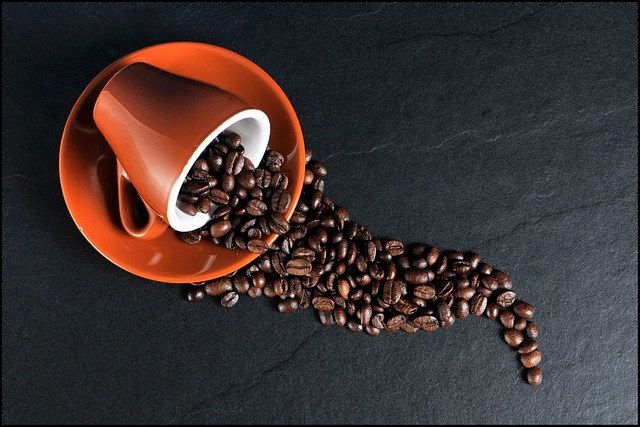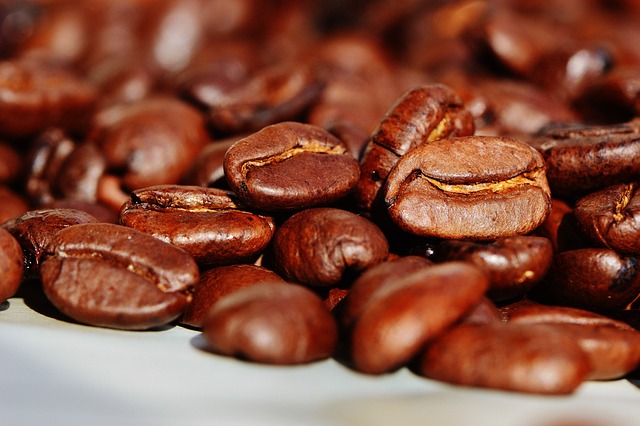Have you ever found yourself sipping a warm cup of kava, wondering if it contains caffeine? If so, you’re not alone. Kava, a traditional drink enjoyed in many Pacific Island cultures, has gained popularity around the world for its relaxing effects. But here’s the burning question: does kava have caffeine? Well, get ready to unveil the fascinating truth as we delve into the world of kava and explore the secrets behind this captivating beverage. By the end of this article, you’ll have a clear understanding of what kava is all about and whether it can give you that energizing jolt like your morning cup of joe. So, let’s dive in and unlock the mysteries of kava together, shall we?
1. Unraveling the Mystery: Does Kava Contain Caffeine?
Many people wonder whether kava, a popular beverage in the South Pacific, contains caffeine. The answer to this question can be quite surprising. Contrary to what some may believe, kava does not contain any caffeine at all. This fascinating root-based drink is completely caffeine-free, making it a great alternative for those who wish to avoid the stimulating effects of caffeine.
Kava is made by grinding the roots of the kava plant and mixing the powder with water. It has been consumed for centuries in traditional ceremonies, social gatherings, and as a way to relax and unwind. One of the reasons why kava has gained popularity in recent years is because of its relaxing properties, without the jitters or insomnia often associated with caffeine. In fact, kava is often used as a natural remedy for stress and anxiety, as it promotes a calming and soothing effect on the mind and body.

2. Understanding Kava: The Ancient Beverage with a Twist
Kava is a unique and fascinating drink that has been enjoyed for centuries in many Pacific Island cultures. Made from the roots of the kava plant, it has a rich history and plays a significant role in social gatherings and ceremonies. Despite its ancient roots, kava has gained popularity worldwide for its tranquilizing and stress-relieving effects.
One of the most interesting aspects of kava is its preparation and consumption rituals. Traditionally, kava is prepared by grinding the dried roots into a fine powder and then mixing it with water to create a muddy, earthy-tasting beverage. The drink is shared among friends and family, fostering a sense of community and togetherness. In some cultures, it is even considered a sacred drink with ceremonial significance.
- Unlike alcohol, kava doesn’t have a strong smell and is not known to cause hangovers.
- The active compounds in kava, called kavalactones, are believed to interact with the brain’s receptors and promote relaxation.
- Although it has a sedative effect, kava doesn’t impair cognitive function or create a feeling of intoxication.
For those looking to experience the benefits of kava without traveling to the Pacific Islands, kava bars have started popping up in major cities around the world. These bars offer a modern twist on the traditional kava experience, serving kava-infused cocktails and mocktails that cater to a wider range of tastes.
So, whether you’re intrigued by the history and cultural significance of kava or simply in search of a natural way to unwind, exploring the world of kava can be an enlightening and enjoyable experience.

3. Delving into the Chemistry: Caffeine’s Absence in Kava
In the world of beverages, kava stands out for its unique qualities. One intriguing aspect of this traditional South Pacific drink is its lack of caffeine. While many other popular drinks like coffee and tea derive their stimulating effects from caffeine, kava offers a different experience altogether. Let’s delve into the chemistry behind kava and uncover the fascinating reasons for its caffeine-free nature.
Kava, scientifically known as Piper methysticum, contains various active compounds called kavalactones. These naturally occurring compounds are responsible for the relaxation and calming effects usually associated with kava consumption. Interestingly, kavalactones do not possess any caffeine-like properties. In fact, kava’s distinct effects can be attributed to a combination of these kavalactones interacting with the human brain and central nervous system. This provides a unique experience that is absent in caffeine-containing beverages.
- Kava’s absence of caffeine:
- Unlike coffee or tea, kava does not naturally contain caffeine.
- Unlike other caffeine-free drinks, kava offers its own set of unique effects.
- Instead of providing a stimulating jolt, kava promotes relaxation and an overall sense of well-being.
- This makes it an appealing alternative for those seeking a different kind of beverage experience.
So, if you’re looking for a refreshing drink without the caffeinated kick, kava might just be the perfect choice. Its natural absence of caffeine, combined with its calming effects, provides a distinctive option in the world of beverages. Try enjoying a cup of kava and discover the intriguing chemistry behind this caffeine-free delight!
4. The Power of Kavalactones: The Unique Substances in Kava
Kavalactones are the magical compounds found in Kava that hold the key to its unique effects. These natural substances are responsible for the calming, relaxing, and mood-enhancing properties of Kava. If you’ve ever wondered why a cup of Kava makes you feel so serene, you can thank the kavalactones!
There are over 18 different kavalactones present in Kava, each with its distinct characteristics. Some of the most noteworthy ones include desmethoxyyangonin, dihydrokavain, and kavain. These kavalactones work in harmony to create Kava’s overall experience. They interact with certain receptors in our brains, such as gamma-aminobutyric acid (GABA) receptors, which are responsible for regulating our anxiety levels. This interaction leads to a sense of calmness and tranquility, making Kava a sought-after herbal remedy for stress relief and relaxation. Additionally, certain kavalactones, like yangonin, have been shown to have muscle-relaxing properties, perfect for unwinding after a long day. With its array of kavalactones, Kava offers a unique and natural alternative for promoting a sense of peace and tranquility. So grab a cup, sit back, and let the power of kavalactones ease your mind and soothe your soul!
5. Kava vs. Coffee: Exploring the Differences in Effects
Kava and coffee are two popular beverages that many people enjoy for their unique flavors and effects. While both are known for providing a stimulating experience, there are several key differences between the two. Let’s delve into the distinct effects that kava and coffee have on our bodies and minds.
Kava:
- Kava is a traditional drink made from the roots of the kava plant, primarily found in the South Pacific. It has been consumed for centuries and is well-regarded for its relaxing properties.
- Drinking kava brings about a sense of calm and tranquility, promoting relaxation and reducing anxiety levels.
- Kava is often used as a social drink, bringing people together in a peaceful and harmonious environment.
- Unlike coffee, kava doesn’t contain caffeine. Instead, it contains compounds called kavalactones, which are responsible for its unique effects.
Coffee:
- Coffee, on the other hand, is a widely consumed beverage made from roasted coffee beans. Its primary active ingredient is caffeine, which acts as a stimulant.
- Consuming coffee provides a jolt of energy and can improve focus, alertness, and overall mental performance.
- Coffee is often associated with increased productivity and is a popular choice for those needing a quick boost throughout the day.
- However, excessive consumption of coffee can lead to jitters, increased heart rate, and disrupted sleep patterns.
As you can see, the effects of kava and coffee differ significantly. While kava induces relaxation and promotes a calm state of mind, coffee energizes and stimulates mental activity. Each beverage offers a distinct experience, catering to different preferences and occasions. So whether you’re seeking a moment of tranquility or a burst of energy, kava and coffee present contrasting options to suit your needs.
6. From Plant to Beverage: How Kava Is Made
Kava is a traditional beverage that has been enjoyed for centuries in the South Pacific. Made from the roots of the kava plant, this drink is known for its relaxing and calming effects. Here’s a step-by-step guide on how kava is made, from plant to beverage:
- Harvesting: The first step in making kava is to harvest the roots of the kava plant. These roots are typically matured for about 3-5 years before they are ready to be harvested. Skilled farmers carefully dig up the roots to ensure they are not damaged during the process.
- Processing: Once the roots have been harvested, they are then cleaned and prepared for processing. The outer layer of the root, called the “periderm,” is removed to reveal the lighter-colored inner part. This inner part is the part used to make kava.
After the roots have been processed, they are typically ground or crushed into a fine powder. This powder is then mixed with water to create a thick and muddy consistency. It’s important to note that traditional methods of making kava involve using a special cloth to filter out any solid particles before drinking.
- Straining: To strain the kava, a cloth or mesh bag is used to separate the liquid from the solid particles. The liquid is collected and transferred into a separate container, ready to be consumed.
- Serving: Kava is traditionally consumed in a communal setting, where friends and family gather to share the experience. It is often served in a special bowl called a “tanoa” and consumed from a “cup” made from a half coconut shell. The drink is passed around and enjoyed as individuals engage in conversation and relaxation.
From plant to beverage, the process of making kava is a labor of love that has been passed down through generations. The unique taste and effects of kava make it a beloved drink in many cultures. So, if you’re ever curious about trying something new and experiencing a sense of calm, give kava a try!
7. Unwinding with Kava: The Relaxing Effects and Benefits
Kava is a traditional Polynesian drink renowned for its relaxation properties. Made from the root of the kava plant, it has been used for centuries to unwind and relieve stress. The effects of kava are unique and distinct, offering a calming sensation that can help ease anxiety and promote a sense of tranquility.
One of the key benefits of kava is its ability to reduce stress and anxiety. The active compounds in kava, called kavalactones, interact with the brain’s receptors to produce a soothing effect. Many people turn to kava as a natural alternative to prescription medications for anxiety.
- Improved sleep: Kava has been found to promote better sleep by helping individuals relax and unwind before bed.
- Relief from muscle tension: If you carry tension in your muscles, kava’s muscle-relaxing properties can offer relief.
- Enhanced mood: Kava’s calming effects can elevate your mood and create a positive sense of well-being.
When consuming kava, it’s important to note that it may have sedative effects, so it’s best to avoid operating heavy machinery or driving. Additionally, excessive consumption of kava can have adverse effects on the liver, so moderation is key.
Overall, kava can be a valuable tool in unwinding and finding relaxation in our fast-paced world. It offers a natural remedy to combat stress and anxiety, providing a tranquil escape from the daily grind.
8. The Bottom Line: Enjoying Kava Without the Jitters of Caffeine
When it comes to finding a beverage that helps you relax without the jitters of caffeine, look no further than kava. This ancient plant-based drink, derived from the roots of the kava plant, has been enjoyed for centuries in the South Pacific islands. Unlike caffeine, which can leave you feeling wired and anxious, kava provides a gentle and calming effect on the mind and body.
One of the key reasons why kava is an excellent alternative to caffeine is its ability to promote relaxation and reduce stress. The active compounds in kava, known as kavalactones, interact with neurotransmitters in the brain, promoting relaxation and a sense of well-being. This can be particularly helpful for those who are prone to anxiety or need to unwind after a long day. With kava, you can experience a natural and mild sedative effect that helps you achieve a state of tranquility without the unwanted side effects of caffeine.
- Kava is non-addictive: Unlike caffeine, which can lead to dependency and withdrawal symptoms, kava is non-addictive. So, you can enjoy it without worrying about developing an unhealthy reliance on it.
- Kava is natural: Made from the roots of the kava plant, this delightful beverage is completely natural and free from artificial additives and chemicals. It’s a great choice for those who prefer a more holistic approach to their wellness.
- Kava is versatile: Whether you prefer a traditional kava drink, kava tea, or kava capsules, there are various forms available to suit your preferences and lifestyle. You can easily incorporate kava into your daily routine and enjoy its calming benefits whenever you need them.
So, if you’re tired of the jitters and looking for a way to unwind naturally, consider giving kava a try. This vibrant drink offers a gentle alternative to caffeine, providing relaxation and a sense of tranquility without any unwanted side effects. Discover the world of kava today and experience the peace of mind you’ve been longing for.
Frequently Asked Questions
Q: What is kava and why is it becoming popular?
A: Kava is a beverage made from the roots of the kava plant, native to the Pacific islands. It has gained popularity due to its relaxing effects on the mind and body.
Q: Does kava contain caffeine?
A: No, kava does not contain any caffeine. In fact, it is often consumed as a caffeine-free alternative to other beverages.
Q: How does kava make you feel?
A: Kava is known to induce a sense of calmness and relaxation. It can help reduce anxiety, promote better sleep, and even enhance sociability in some individuals.
Q: Why is kava sometimes compared to coffee then?
A: Although kava and coffee are different in terms of their chemical composition and effects on the body, both beverages are often associated with social gatherings. They can be enjoyed in similar settings, but kava offers a different experience without any caffeine.
Q: Are there any potential side effects or risks associated with kava consumption?
A: When consumed in moderation, kava is generally considered safe. However, excessive consumption or long-term use has been linked to liver problems. It is important to follow recommended dosage guidelines and consult a healthcare professional if you have any concerns.
Q: How is kava prepared and consumed?
A: The traditional method of preparing kava involves grinding the root into a powder, mixing it with water, and straining it through a cloth. Modern alternatives include ready-to-drink kava products or instant mixes, which are convenient and easy to prepare. It is typically consumed socially in a relaxed setting.
Q: Can anyone consume kava?
A: While kava is generally safe for most individuals, some groups of people should exercise caution. Pregnant or nursing women, individuals with liver problems, or those taking certain medications should consult their healthcare provider before consuming kava.
Q: Is kava legal everywhere?
A: Kava is legal in many countries, including the United States, but regulations regarding its sale and consumption vary. It is important to check the laws and regulations in your specific area.
Q: Can kava be addictive?
A: Kava itself is not considered physically addictive. However, like any substance, excessive use or dependency on kava for emotional support can lead to psychological dependence. It is always wise to use any substance, including kava, in moderation.
Q: Are there any alternatives to kava for relaxation?
A: Yes, there are various alternatives to kava for relaxation, including herbal teas like chamomile or lavender, meditation practices, engaging in hobbies, and physical activities such as yoga or exercise. It’s important to find what works best for individual preferences and needs.
Future Outlook
In conclusion, Kava is a unique and enchanting beverage known for its soothing effects and ability to promote relaxation. Unlike caffeinated drinks, Kava does not contain any caffeine, making it an excellent choice for those looking to unwind without the jitters. Its origins trace back to the Pacific Islands, where it was traditionally consumed in social gatherings or to mark special occasions. With its earthy flavor and rich cultural heritage, Kava has gained popularity worldwide as an alternative to energizing drinks like coffee and tea. So, next time you’re seeking a moment of tranquility, consider indulging in a cup of Kava and experience the blissful calm it can bring.






